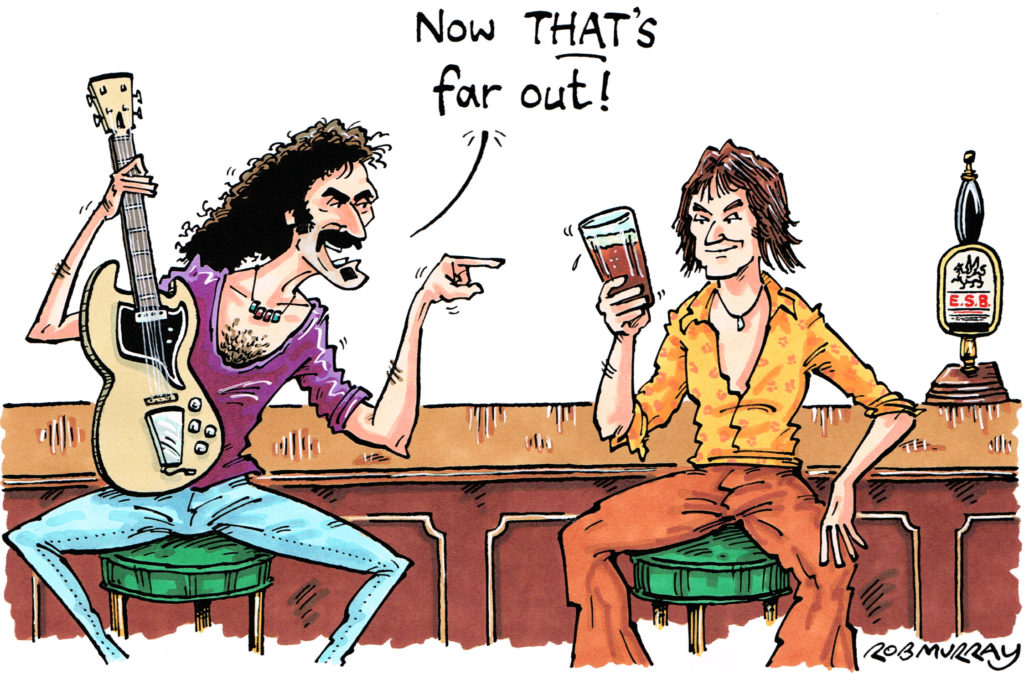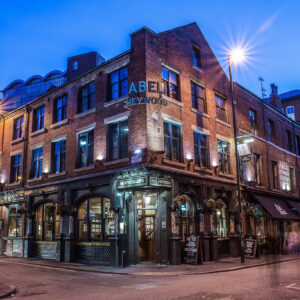For John Keeling, Bitters and Milds have been derided for far too long. These were the styles that played a key role in his formative years in the world of beer. So it’s a good thing then, he says, that they’re coming back into vogue.
Bitter and Mild, the beers of my youth through to middle age. They seemed to come in for some criticism during the rise of craft beer and “brown, boring bitter” was a term that particularly rankled.
I never found bitter boring. Sure, there were poor versions mainly brewed by the bigger companies but one of the joys of travelling through the country was to try the local version of bitter.
In fact, being `a born and bred Mancunian’ meant it was not difficult to find different versions. I grew up on Boddingtons, Robinsons, Holts, Hyde’s, and Oldham Brewery.
They also had their own version of mild, too. Anybody who thinks that beer in the 70’s was rubbish simply wasn’t a drinker in the 70’s. CAMRA was formed to save the great beer that was being brewed and not to get people to brew great beer. CAMRA members knew what great beer was, as most of them were drinking it!
I found my first steps into drinking at the age of 18. A wonderful and interesting experience. Those who know me well will know my deep aversion to breaking and bending rules, and I will deny all of those stories of my underage drinking that appear in print. However, over a pint I might come clean. I might even mention drinking at Wilson’s in my first job in a brewery at the age of 17.
The term boring could be applied to any style of beer.
because there are many boring versions of various beers. In the 70’s and 80’s lager in this country was particularly boring. In the craft beer scene, there are many boring IPA’s which are so dominated by the flavour of the hop they satiate your palate after only a couple of mouthfuls. Thank goodness for those brewers who want a good malt backbone to their beer to show off the crowd-pleasing flavour of the hop.
So, what are the virtues of a good pint of bitter?
Indeed, what are the virtues of a good pint of mild. They share many virtues, one thing they certainly share is great drinkability. When you have one you want another. How do they achieve this? Well, generally, they don’t possess great alcoholic strength.
There was one major exception to this in my early drinking days, but I will return to that particular beer later. They don’t satiate your palate. In fact, some possess the power to become more interesting as you drink them. You discover more about their flavour all the way through a pint.
They certainly differ in bitterness and hop character. While bitters are balanced towards the hop, milds are balanced towards the malt. Both beers are at their best in cask form which, when served properly, (what
a shame it is having to use that caveat) enhances their drinkability because of the natural carbonation and cellar temperature.
I remember early in my career at Fuller’s being sent to the Bass Brewery in Burton. There I found that they had been “testing” drinkability. They had been giving different local sports clubs free keg beers and free cask beers then measuring how much was drunk.
They found that more cask beers were drunk and had come up with an interesting theory. That was the closer the beer was drunk to when the yeast was removed then the greater its drinkability.
The one exception to the alcoholic strength that I mentioned earlier was of course Fuller’s ESB. Weighing in at a mighty 5.5% ABV this was certainly a major change from 3.7% ABV Boddingtons.
The first time I ever drank this beer was in 1977 when I went to Hammersmith Odeon with a few friends to watch Frank Zappa. I asked the landlord (who I found out later was a certain Eddie McManus) what people drank in London. He said ESB and three pints later we didn’t need any wacky baccy to help us get high on the music.
Years later, in January ’81, I joined Fuller’s. On my first day I went into the Mawson Arms for a lunchtime pint of Chiswick and who served me? None other than Eddie McManus. Small world…
So, what is the future for these beers I love? Well I am delighted to report that things seem to be turning full circle. There is a growing appreciation of traditional beers like Harveys, Landlord and ESB. I see some milds and bitters now being brewed by craft breweries.
I think that craft brewers are now beyond the experimentation stage and are now true masters of the art of brewing. We see this in lagers where it has been said that a good lager is the hardest beer to perfect. Well, I have tasted some that are darn close.
I would also say that a good cask bitter or mild is equally difficult to get perfect. All the new milds and bitters I have tried have been very tasty too. I can now look forward to a long old age drinking the beers I love.









